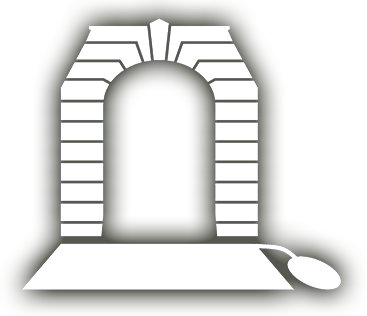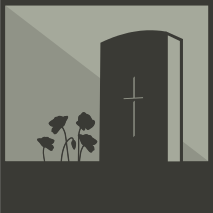
HERBERT, Arthur Leslie
| Service Number: | 3260 |
|---|---|
| Enlisted: | 24 August 1915, Adelaide, South Australia |
| Last Rank: | Private |
| Last Unit: | 52nd Infantry Battalion |
| Born: | Broken Hill, New South Wales, Australia, 18 January 1893 |
| Home Town: | Millicent, Wattle Range, South Australia |
| Schooling: | Not yet discovered |
| Occupation: | Labourer |
| Died: | Killed in Action, Mouquet Farm, France, 4 September 1916, aged 23 years |
| Cemetery: |
Courcelette British Cemetery |
| Memorials: | Adelaide National War Memorial, Australian War Memorial Roll of Honour, Millicent War Memorial |
World War 1 Service
| 24 Aug 1915: | Enlisted AIF WW1, Private, 3260, Adelaide, South Australia | |
|---|---|---|
| 27 Oct 1915: |
Involvement
AIF WW1, Private, 3260, 12th Infantry Battalion, Enlistment/Embarkation WW1, --- :embarkation_roll: roll_number: '10' embarkation_place: Adelaide embarkation_ship: HMAT Benalla embarkation_ship_number: A24 public_note: '' |
|
| 27 Oct 1915: | Embarked AIF WW1, Private, 3260, 12th Infantry Battalion, HMAT Benalla, Adelaide | |
| 4 Sep 1916: | Involvement AIF WW1, Private, 3260, 52nd Infantry Battalion, Mouquet Farm, --- :awm_ww1_roll_of_honour_import: awm_service_number: 3260 awm_unit: 52nd Australian Infantry Battalion awm_rank: Private awm_died_date: 1916-09-04 |
Help us honour Arthur Leslie Herbert's service by contributing information, stories, and images so that they can be preserved for future generations.
Add my storyBiography
Arthur Leslie Herbert (Les) and his sister came to Millicent from Adelaide after their mother died in 1903.
Arthur was taken in by step uncle Joseph Warr and Les's sister was taken in by step aunty Ellen Dalton, they had no other family members.
Les enlisted after being sent a white feather and paid for that with his life.
Biography contributed by Evan Evans
From Francois Somme
Pte 3260 Arthur Leslie Herbert
52nd Australian Infantry Battalion, C Company,
13th Brigade, 4th Division, AIF
The Somme, in the pages of history, was the symbol of absolute carnage which took place in the horror of the battles which were the deadliest of the whole great war which led an entire generation of men to kill each other through the mud and barbed wire but walking on these sacred grounds today dotted with poppies that sway peacefully in a summer breeze, behind these thoughts, other words reach the heart with a deep feeling of respect and gratitude because, beyond the blood that was shed here, I think of the camaraderie that these men showed in the trenches, of the loyalty that they expressed towards each other, for comrades whom they saw as brothers, I think to the love they had in their hearts for their country and for their loved ones, I think of the pride they felt in doing their duty in the name of peace and freedom,I think of the compassion they showed in the darkest hours, even towards their enemies whom they saw as men like them. The Somme was much more than blood, it was the story of exceptional men who lived and fought with humanity and devotion until their last breath and over whom I feel proud and honored to watch every day to perpetuate their memory, to tell the stories of men that I see, that I esteem and that I love like my sons, like my heroes for whom I would give the time of my life so that theirs will never be forgotten.
Today, it is with the deepest gratitude in my heart and with the utmost respect that I would like to honor the memory of one of these young men, of one of my boys of the Somme who, for Australia and for France, for our tomorrow, gave his today, his life, his everything. I would like to pay a very respectful tribute to Private number 3260 Arthur Leslie Herbert who fought courageously in the 52nd Australian Infantry Battalion, C Company, 13th Brigade, 4th Division of the Australian Imperial Force, and who was killed in action 109 years ago , on September 4, 1916 at the age of 23 during the Battle of the Somme.
Arthur Leslie Herbert, who was very affectionately called "Les" was born on January 18, 1893 in Broken Hill, New South Wales, Australia, and was the son of Arthur Herbert (born September 19, 1865 in Adelaide, South Australia, died on 11 May 1896 at the age of 30 in Terowie, South Australia), and Amelia Millicent Herbert (born Tilley on May 19, 1869 in Nairne, South Australia and died on September 5, 1903 at the age of 34 in Dulwich, South Australia) .He had a sister, Ella, with whom he was very close. Unfortunately, after the death of their mother, they were separated and went to live in Millicent. Arthur was taken in by step uncle Joseph Warr and Ella was taken in by step aunty Ellen Dalton, they had no other family members. Arthur worked as a laborer until the outbreak of the war.
In August 1914 the war broke out and Herbert, who feared being far from his sister, hesitated to join the front line but one day, early in 1915, he received a white feather, and refusing to be seen as a coward, he answered the call of duty to prove his courage and he enlisted on August 30, 1915 in Adelaide as a Private in the 12th Australian Infantry Battalion, 11th Reinforcement, which was raised under the command of Lieutenant Colonel Lancelot Clarke to become part of the 3rd Brigade in the 1st Division, and was drawn largely from Tasmania but about 50% of the unit was comprised of South and Western Australians. Many of the South Australians were from the Port Pirie region in that State's mid North.After a training period of just over a month, Arthur embarked with his unit from Adelaide, on board HMAT A24 Benalla on October 27, 1915 and sailed for Egypt.
On March 3, 1916, Arthur arrived in Egypt and the same day, marched to Zeitoun then to Tel-El-Kebir where he was transferred and taken on strength in the 52nd Australian Infantry Battalion which was raised here on March 1, 1916 under the command of Lieutenant Colonel Miles Fitzroy Beevor (who had served with the 10th Battalion at ANZAC, Gallipoli) as part of the process that was known as "doubling the AIF" to create the 4th and 5th Divisions. Following the evacuation from ANZAC and with recruits arriving from Australia in large numbers, it was decided to split the 1st Division (1st, 2nd and 3rd Brigades) and the 4th Brigade into two to create sixteen new or so-called "Pup" Battalions. The 3rd Brigade was split to create the 13th Brigade and together with the 4th and 12th Brigades comprised the new 4th Division,then, after a period of intensive training in the desert, Arthur, alongside his new unit marched to Alexandria where they joined the British Expeditionary Force and proceeded overseas for France on June 5, 1916 on board HMT Ivernia.
On June 12, 1916, after a week of silence on the calm waters of the Mediterranean Sea, Arthur finally arrived on the banks of France and was disembarked in Marseilles then from there, the men of the 52nd Battalion were sent by train to Caestre (Hauts- De-France) where they arrived on June 15 and, after completing their equipment, followed three days of training and marched to Sailly-Sur-La-Lys on June 20 then on June 23,relieved the 12th Australian Infantry Battalion on the front line of the Petillon sector, near Fleurbaix, also called "nursery sector" where the Australian troops, including the 52nd Battalion, acclimatized to trench warfare which they worked to improve then witnessed the first artillery duels and suffered from heavy bombardment but held on with courage despite the first losses being significantly high and were finally relieved on the night of July 11 to 12 by the 58th Australian Infantry Battalion and marched into billets at Courte Croix.
On July 14, 1916, Arthur and the 52nd Battalion left Courte Croix and marched for Bailleul from where they embarked by train for the battlefields of the Somme and later in the day arrived at Candas then marched into billets at Halloy-Les-Pernois where they followed a period of training then marched for Toutencourt on July 30,and for Harponville on August 2. These were the last moments of relative calm for the 52nd who marched for Albert on August 6 and bivouacked at "Brickfields" then, ready to fight, they moved to "Tara Hill", in Pozieres then,on August 14, took position in the "Wire Trench" and played a supporting role in the initial fighting during the battle of Mouquet Farm.
For many of the men who fought on the Western Front, Pozières was just the beginning of a long and bloody series of battles they would fight again and again for whatever remained of their broken lives.
Following the consolidation of Pozières and the Windmill, General Gough began to implement the next phase of his plan, which was to thrust north along the ridge to drive a wedge behind Thiepval about 2 kilometres North West of Pozières. Barring the right approach to Thiepval was a battered and broken complex, which before the war had consisted of a homestead, courtyard, and dairy; this was Mouquet Farm or as the Anzacs called it "Moo Cow Farm." The Germans had earlier identified the ground the farm sat on as tactically significant and in addition to fortifying it, had built a network of interconnecting rooms and bunkers beneath the farm.
Commencing on 8 August the 4th Division was to seize the approaches to the farm and by 14 August capture the Farm itself. The 4th Brigade advanced along the western slope of the ridge on 8 August, after two days of fighting under the most appalling conditions; patrols were pushed out to establish posts in the valley to the south of the farm and at a sunken road to the east of it.
The Germans launched two counter-attacks on 11 August, but withdrew when the Australian battalions cut their attacks to pieces with aggressive and sustained machine gun fire. The following day the Australians advanced to a line along which they were then directly facing the German positions among the rubble of Mouquet Farm.
Preparations were made to attack the farm on 13 August, but when the Germans recaptured the ground they had earlier lost to the British, which was, then on the 4th Division’s flank, the plan was changed. It was during the attack on this modified objective that Captain Henry Murray’s Company seized part of Fabeck Trench northeast of the farm.
After almost a week of heavy fighting, the 4th Division’s determined but unsuccessful attempts to capture the Farm had cost them approximately 4,650 casualties; the 1st Division relieved them on 15 August.
The 1st Division, which had by then received reinforcements and was up to two thirds of its full strength, was tasked with consolidating the gains made by the 4th before conducting two further attacks. The first was to be against the heavily defended enemy trench system known as the Fabeck Graben and the other against a new line of trench opposite the Windmill.
At 9 p.m. on 18 August the 1st Division launched their attacks with the 2nd Brigade attempting to push northeast along Bapaume Road in order to extend their front past the Windmill and the 1st Brigade moving to capture the Fabeck Graben trench system in order to isolate the Germans in Mouquet Farm from their support at Courcellette.
Unfortunately, the Germans had by then reinforced their line and with the attacks progressing more slowly than anticipated, this plan soon began to go awry. To increase the momentum and relieve the 1st Brigade, which had suffered too many casualties, the 3rd Brigade moved forward.
On 21 August, as the 3rd Brigade moved up to position itself for the attack on Fabeck Graben, it was shelled by the enemy’s heavy artillery. It was decided that since the Germans could see everything across the panorama before them, the attack should be commenced when the Germans least expected it, during daylight. With Zero set for 6 p.m., this was to be the first time on this battlefield that an Australian unit would conduct a daylight attack. At 5 p.m., the Germans commenced to shell the 10th Battalion’s front and support lines heavily causing 120 casualties even before the attack was launched which meant the attack was launched in two waves instead of four, leaving two platoons of Support Coy in the firing line. Of the eight officers involved in the attack, seven were killed or wounded within the first few minutes and the only remaining officer was wounded immediately upon reaching the final objective.
In the heat of battle with the ground and trenches so badly torn up some of the platoons actually passed over the enemy’s newly dug trench and continued to push forward until halted by their own barrage.
By 6.30 p.m., the left company had occupied their first objective as had part of the right company, but with the remainder held up by heavy machine gun fire the final objective was not taken. The scheme for gaining surprise by conducting a daylight attack, while sound in theory proved otherwise in practice. From the moment the first wave had left the trenches it came under heavy artillery, machine gun and rifle fire and when the bombers attempts to take an enemy sap running south were foiled, the left company could advance no further. Another platoon from Support Company was sent forward and although it was able to advance a short distance soon found that due to a general thinning in the line through casualties there were huge gaps and were compelled to fall back.
Shortly after 8 p.m., the situation deteriorated when the left company completely lost touch and was enfiladed from both flanks; the survivors quickly withdrew to a new line of trench and dug in.
This new line, which was linked to the 11th Battalion on left of Sunken Road, was held from 9 p.m., 21 August, until the 10th Battalion was relieved by the 21st Battalion during the night of 22 August.
After a terrifying week and a further 2,650 casualties, the 1st Division was relieved by the 2nd Division during the night of 22 August.
When the 2nd Division relieved the 1st it had not fully recovered from the losses suffered at Pozières and the Windmill two weeks earlier but on 26 August the 6th Brigade (although very much under strength) launched a dawn attack. Mouquet Farm was by then defended by the German Guard Reserve Corps and although the men of the 6th Brigade actually reached their objective, they were unable to hold it. Of the almost 1270 casualties suffered by the 2nd Division during their second series of attacks here, the 6th Brigade suffered the loss of almost 900 officers and men.
The 4th Division was brought back on 27 August and the fighting around Mouquet Farm continued to rage.
By this time, the 1st Division were already in Ypres, the 2nd Division were moving to join them and so only the 4th It was decided that as part of General Gough’s assault on Thiepval, the 1st ANZAC Corps would conduct one final attack on Mouquet Farm on 3 September.
The strongest but least experienced brigade in I ANZAC Corps, the 13th Brigade, was rested in preparation to conduct the attack while the other brigades carried out all preparatory work, such as digging and carrying stores. The attacking battalions from left to right would be the 51st, 52nd and 49th with the 50th, which had suffered so many casualties during its first tour to be the reserve.
The 51st was to attack the Farm, while the 49th was to attack Fabeck Graben (High Trench) with the 52nd Battalion attacking a sector of Fabeck Graben between the 51st and 49th Battalions.
After reaching their assembly areas at around 11 p.m., guides led the attacking battalions forward to their jumping off points where the men lay down in shell-holes and waited 6 hours for the attack to commence at 5.10 a.m.
As soon as the covering barrage lifted, the attacking battalions hurried forward towards their objectives and parts of Fabeck Graben were captured. When the 51st Battalion passed through the Mouquet Farm and on up to the section of Fabeck Graben behind it, Brigade HQ was prematurely advised the Farm with the exception of a few dugouts had been taken. When two platoons of B Company, 52nd Battalion reached the Farm, they suffered heavy casualties.
The enemy machine gunners raked the battalion with heavy machine gun fire from close range, then following a heavy artillery barrage attacked the scattered groups of the 52nd and eventually pushed them back; two of the officers were wounded, and nine killed.
On 5 September, the 4th Division after suffering more than 2400 casualties during this their second unsuccessful attempt to take Mouquet Farm were relieved by the Canadians.
Gough’s Reserve Army swept past Mouquet Farm in a wide advance on 26 September and captured Thiepval but even then the stubborn German troops in their bunkers under the Farm held out for a further 24 hours.
When they were finally withdrawn from the slaughter yards of the Somme the weary, mud-covered men of the fourth Division drifted down to the bivouac area on the Brickfield north of Albert where totally exhausted they lay down and fell asleep instantly. At around 3 am it began to rain steadily and so at dawn much of the enjoyment was taken out of breakfast. It was still raining an hour later as the men formed up in their companies for roll call before setting off on a three-day march to their rest billets. There was an unusual silence in the ranks that morning and as they marched across the broken roads under the weight of their heavy packs. Almost every man kept his head down.
On August 16, 1916, Arthur and his comrades moved back to "Brickfields" and reached Warloy-Baillon on August 18 then on August 23, he fell slightly ill, was admitted to a Field Ambulance and placed under observation then, was discharged to duty on August 24 and rejoined his unit at Bonneville on August 25. There followed a period of reorganization and training including attacks, musketry, bayonet fights then on September 2, returned to the front line at Mouquet farm.
Unfortunately, it was on September 4, 1916 that Arthur met his fate during the last attempt to capture Mouquet Farm and during the advance, managed to capture a portion of a German trench with a few men from his company but a shell suddenly fell on his position and was killed instantly, he was 23 years old.
Today, Arthur Leslie Herbert rests in peace alongside his friends, comrades and brothers in arms at Courcelette British Cemetery, Somme.
After the death of Arthur Leslie Arthur, two articles were written and published in "The South Eastern Times" as follows:
"Mrs J. Warr has been notified that her nephew, Private Les. Herbert, has been missing since September 4, 1916. Private Herbert was fighting in France when his relatives last heard from him."
"No 3260 Private A. L. Herbert 52nd Battalion (late 12th) who was previously reported missing, is now reported to have been killed in action in France on September 4, 1916. The deceased soldier enlisted at Millicent, and sailed from Australia on October 27, 1915. He under-went training in Egypt, and then went on to France. The last letter received from him by his relatives must have been written a few days before his death. The late Private Herbert was 23 years of age. He was born at Terowie, but had lived at Millicent with his uncle (Mr J. Warr) since he was 10 years of age. He was a much loved member of the household, and was an industrious and clean-living young man. The official news of his death was received on Tuesday, by his sister Mrs D. Randall, of Tantanoola."
Arthur, so young but brave among the brave, more than a hundred years ago, you responded with your head held high to the call of duty to show your bravery and your loyalty to your country which you have made proud by your extreme courage on the battlefields of the Somme on which you fought hard with loyalty and honor alongside your comrades and brothers who followed you with confidence and faith through the red fields of poppies, towards the trenches of the great war which, in a few months fury and fierce fighting, became red with the blood of thousands of men who, with you, served with pride and conviction and who, too young, paid the supreme sacrifice under fire and bullets but in front of machine guns, under rain of bullets and shrapnel, they stood tall and never took a step back despite the hurricanes of lead which fell on them in shrill whistles which in these quagmires of mud, rained down death followed by the mournful symphony of tons of shells played endlessly by artillery, a machine of death which, like a merciless conductor, led the world, once so peaceful, into the madness and chaos of a merciless war which condemned men to kill each other in the brutality of heroic charges which were decimated by grenades, by the fire of rifles and machine guns which caused blood to flow at a merciless pace.Battalion after battalion, these young boys, who left their schools, their farms, their homes a few months earlier, put down their pens, their shovels and found themselves with a rifle in their hands which was sometimes too heavy and too big for them and during a short training, learned how to kill men who were like them in the opposing trenches and when they came to France, it was not to kill their neighbor but they marched forward shoulder to shoulder in the name of peace and freedom and , following orders, were thrust bayonets forward onto open-air slaughterhouses where they endured horrific hand-to-hand combat amidst howls of rage and agony and wounded, were frozen in time for minutes that seemed to be hours during which fell friends and enemies in the barbed wire, in the mud and the shell holes which swallowed the bodies of these heroes who did not find the glory and the great adventure hoped for but the silence of their white graves,the madness of murderous battles through which they lost their brothers and returned overwhelmed of sadness in the trenches where they had to live alongside the lifeless bodies of hundreds of their friends who were mowed down before even having time to shoulder their rifles.In this hell on earth, among the rats, eaten away by lice, tormented by hunger, tortured by fear, their faces blackened with filth and the blood of the men who stood beside them, they nevertheless found the strength and the courage to hold on and remain strong thanks to the fraternity and camaraderie which was their salvation in this abyss of despair that was the war and under the artillery duels, in an indescribable din, found in good humor, the light who held their hearts and guided them to the peace so dearly paid for and when the bugles sounded for November 11, 1918, in the trenches, on no man's land, the silence gave way to tears when they saw the sacred grounds of the north of France covered with the bodies of thousands of young Diggers who, like Arthur, did their duty with the greatest courage and who, after the mud of the battlefields, joined the serene and peaceful cimereries flowered with poppies where they stand side by side, united in an eternal camaraderie and in the light of remembrance that will forever illuminate their memory and their names.Young they were and young they will forever remain tenderly wrapped in the colors of Australia which did so much for France and which, together, brother nations, advance shoulder to shoulder in the most sacred of friendships and come together in remembrance, in the respect and gratitude with which I will always watch over these young men so that their names live forever, so that the ANZAC spirit, in the Somme, lives forever.Thank you so much Arthur, for everything you did with honor and the greatest bravery in the name of peace and freedom, for France and for Australia whose love and respect will always be yours. At the going down of the sun and in the morning,we will remember him, we will remember them.













